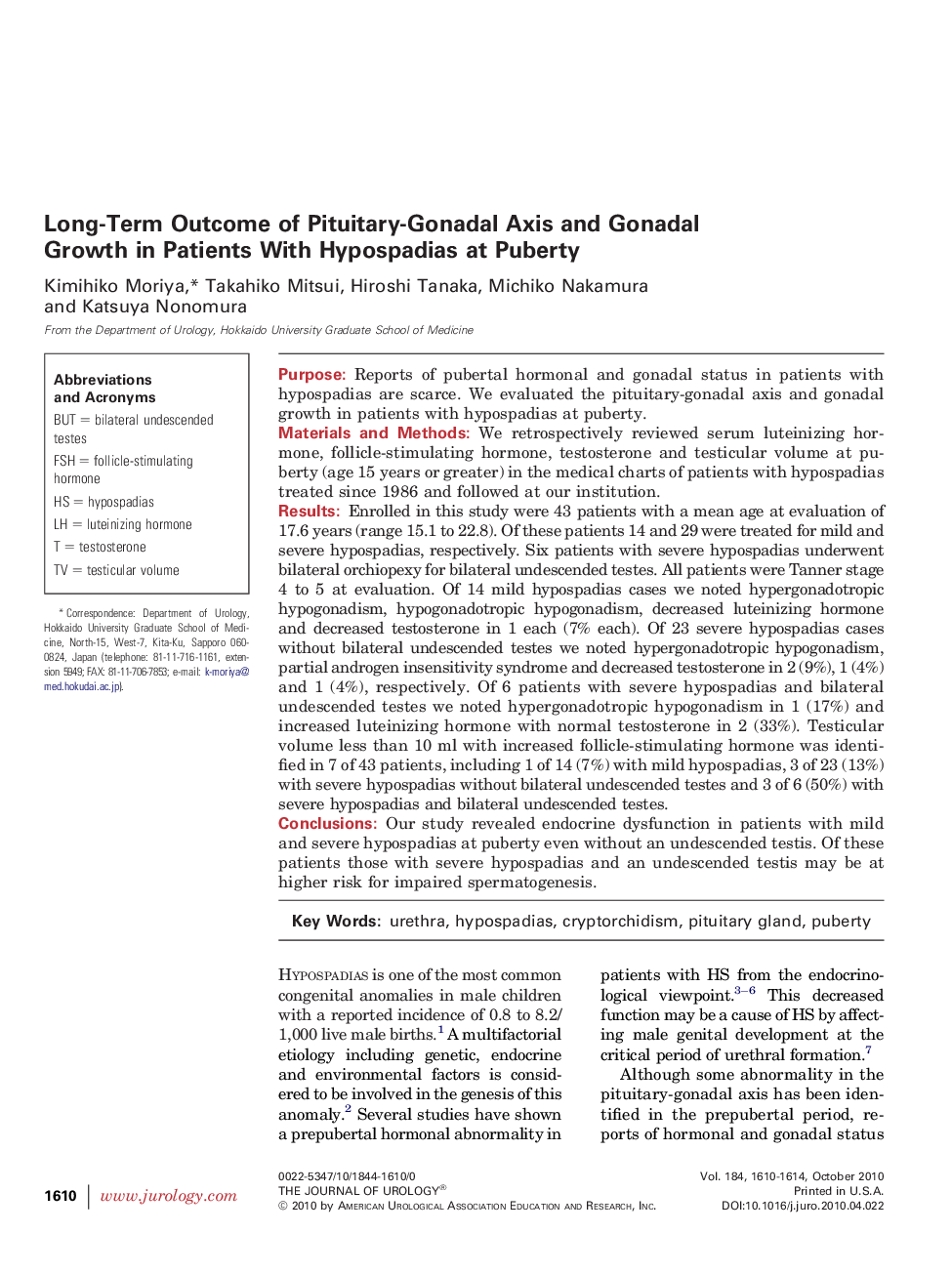| کد مقاله | کد نشریه | سال انتشار | مقاله انگلیسی | نسخه تمام متن |
|---|---|---|---|---|
| 3867539 | 1598959 | 2010 | 5 صفحه PDF | دانلود رایگان |

PurposeReports of pubertal hormonal and gonadal status in patients with hypospadias are scarce. We evaluated the pituitary-gonadal axis and gonadal growth in patients with hypospadias at puberty.Materials and MethodsWe retrospectively reviewed serum luteinizing hormone, follicle-stimulating hormone, testosterone and testicular volume at puberty (age 15 years or greater) in the medical charts of patients with hypospadias treated since 1986 and followed at our institution.ResultsEnrolled in this study were 43 patients with a mean age at evaluation of 17.6 years (range 15.1 to 22.8). Of these patients 14 and 29 were treated for mild and severe hypospadias, respectively. Six patients with severe hypospadias underwent bilateral orchiopexy for bilateral undescended testes. All patients were Tanner stage 4 to 5 at evaluation. Of 14 mild hypospadias cases we noted hypergonadotropic hypogonadism, hypogonadotropic hypogonadism, decreased luteinizing hormone and decreased testosterone in 1 each (7% each). Of 23 severe hypospadias cases without bilateral undescended testes we noted hypergonadotropic hypogonadism, partial androgen insensitivity syndrome and decreased testosterone in 2 (9%), 1 (4%) and 1 (4%), respectively. Of 6 patients with severe hypospadias and bilateral undescended testes we noted hypergonadotropic hypogonadism in 1 (17%) and increased luteinizing hormone with normal testosterone in 2 (33%). Testicular volume less than 10 ml with increased follicle-stimulating hormone was identified in 7 of 43 patients, including 1 of 14 (7%) with mild hypospadias, 3 of 23 (13%) with severe hypospadias without bilateral undescended testes and 3 of 6 (50%) with severe hypospadias and bilateral undescended testes.ConclusionsOur study revealed endocrine dysfunction in patients with mild and severe hypospadias at puberty even without an undescended testis. Of these patients those with severe hypospadias and an undescended testis may be at higher risk for impaired spermatogenesis.
Journal: The Journal of Urology - Volume 184, Issue 4, Supplement, October 2010, Pages 1610–1614